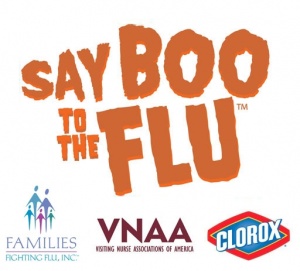December 3rd, 2008 by Dr. Val Jones in Opinion, Primary Care Wednesdays
6 Comments »
By Alan W. Dappen, MD; Steve Simmons, MD; Valerie Tinley, FNP of Doctokr Family Medicine
We are a family doctor, an internist and a family nurse practitioner working on the front line of the American health care system. We share a moral and ethical duty to protect the health of our patients along with all our colleagues who labor daily doing the same.We as Americans are proud of what has long been considered a first-rate health care system. Sadly, this system is broken despite our best efforts. Americans spend much more per capita for care as any other country. The World Health Organization has graded our care as 37th “best” in the world. Even worse, American citizens were the least satisfied with their medical care compared to the next five leading socialized industrialized countries, including England, Germany, Canada, Australia and New Zealand. There are many things wrong. Let’s examine a few:
Primary care medicine in America is gasping for its last breath. Internists, family doctors, pediatricians (whom health experts consider essential to a robust and cost-effective delivery system) are leaving primary care in droves. The number of newly trained generalist doctors has plummeted so fast that extinction of the generalist doctor has been forecasted within 20 years by both the American Academy of Family Practice and the American College of Physicians.
Patients are angry and exasperated with long delays, poor service and confusing and redundant paperwork. To date 17% of us are uninsured and this number will quickly grow in a deepening recession.
Employers face a huge cost burden as health insurance prices go through the roof. CEOs consistently say the runaway costs in health care benefits (which double in price every seven to ten years) threaten the viability of their companies. Since 2000, the number of small businesses offering health insurance has dropped 8%.
Health insurance companies are making so much money that several states have motioned legislation compelling insurance companies to disclose the percentage of premiums spent on actual medical care. Not surprisingly, their lobbyists are resisting. It is not uncommon for insurance companies to keep 30-40% of every dollar for “administration” and profits. Many of these companies are on record reaffirming their commitment to shareholders and short-term profits.
Doctokr (“doc-talker”) Family Medicine is a medical practice that was created to respond to the conflicts and problems listed above. We have worked to resuscitate the soul of the Marcus Welby-style patient-focused physician while adding technology to deliver fast, responsive and informed care. All fees are transparent and time-based and are the responsibility of our patients to pay. All parties that interfere with the doctor patient relationship or increase our costs have been removed from the equation. The practice delivers “concierge level” services: 24/7 access, connectivity to the doctor no matter where our patients are located, same day office visits for those that need to be seen, even house calls for those unable to get to our office. By removing the hurdles and restoring transparency and trust, 75% of our clients get their entire primary care needs met for $300.00 a year.
This post is written by three medical professionals who stopped waiting for someone else to find a solution and are actively changing primary care in ways that dramatically improve quality, convenience and access, while drastically reducing costs. The US deserves excellent health care and it must be done right. To understand why we would bother to “walk the walk,” we ask your indulgence and participation while we “talk the talk.” We hope this format will educate and inform you in ways that move you to participate in your care. Health care is about you, just as much as it about us, because we are all patients. We all have a stake in shaping the inevitable need for reform.
The next upcoming topics:
- Where did the Marcus Welby, MD-style of primary care go and how can we get it back?
- How have you as a patient lost control of your body and health?
- Turning the primary care model upside down: What does primary care need to do to reinvent itself so that it serves its patients without other conflicting interests?
- Begin the exploration of the unexamined assumptions of health care….
Until next week, we remain yours in primary care.
– Alan, Steve, and Valerie



November 5th, 2008 by Dr. Val Jones in Medblogger Shout Outs, News
3 Comments »
This news from Gary Schwitzer’s excellent blog:
Dr. Nancy Snyderman of NBC News appeared on the Today Show with Matt Lauer last week, profiling a physician-author who has written that the best science does not establish a causal link between childhood vaccines and autism. 
Lauer, in a followup question, mis-spoke and called it a “casual” link – not causal. One wonders whether he truly knows what the words mean.
Snyderman talked about how the physician-author, Dr. Paul Offit (author of “Autism’s False Prophets”), has received death threats. Snyderman herself said she had been physically ambushed by those who contend that vaccines cause autism.
As Snyderman was wrapping up the segment, Lauer said – in typical anchor throwaway language:
“Controversial subject …”
Snyderman immediately shot back, “Not controversial subject , Matt. …It’s time for kids to get vaccinated. The science is the science. It’s not controversial.”
You can see the video here or here.
Kudos to Snyderman for educating her big-bucks anchor colleague live on-the-air.
For a full review of Offit’s book, please check out this link.
November 1st, 2008 by Dr. Val Jones in Expert Interviews
2 Comments »

Tanya Altmann, MD
It’s been a little while since I had a “blonde moment” during an expert interview, but this one was pretty funny. I was in the middle of a podcast with Dr. Tanya Altmann, media personality and spokesperson for the American Academy of Pediatrics, about vitamin D – when I thought I heard her say that there were now special formulas of vitamin D for incense.
I knew that Dr. Altmann practiced medicine in Southern California, so I wasn’t terribly surprised about this new method of vitamin delivery. However, I hadn’t heard about vitamin D inhalation previously, so I asked her to explain how this new incense formula worked.
She paused to gather her thoughts and then corrected me: “No, I was saying that there’s a new formula for INFANTS…”
Oh. My bad.
So here’s the rest of our delightful interview. You may want to listen to the podcast, though I did edit out the awkward “incense” section so as not to start a new cult. One doesn’t want to give others too many ideas on the Internet! I hope that Dr. Tanya won’t think less of me for that misunderstanding.
Dr. Val: What is vitamin D, and why do we need it?
Dr. Tanya: Vitamin D is an essential nutrient for your entire body. Although it’s called a vitamin it actually functions as more of a hormone, playing an important role in the immune system. Vitamin D can help to protect people against illness, diabetes, and even cancer, though its role in helping to build strong bones (and protect infants from rickets) is probably its best known attribute.
Dr. Val: Tell me about the new AAP guidelines for infants, children and adolescents. Why did they change?
Dr. Tanya: Based on data collected in several recent research studies, the American Academy of Pediatrics issued new guidelines last month which essentially doubled the recommended daily amount of vitamin D (from 200 to 400 IUs) for infants, children, and adolescents. Historically people were able to get sufficient amounts of vitamin D through sun exposure (the body can create vitamin D when the skin is exposed to sunlight), but now that we need to protect kids from sun’s harmful rays due to future skin cancer risk, vitamin D levels have dropped significantly. Sunscreen, of course, blocks the sun from stimulating the creation of vitamin D in the skin. Read more »
October 29th, 2008 by Dr. Val Jones in Health Tips, Medblogger Shout Outs
No Comments »
 My friend and fellow blogger Kerri Morrone Sparling (at the Six Until Me blog) was diagnosed with type 1 diabetes when she was in second grade. The diagnosis came a few short weeks before Halloween, and back then she didn’t realize the risks of sneaking candy bars behind her mom’s back.
My friend and fellow blogger Kerri Morrone Sparling (at the Six Until Me blog) was diagnosed with type 1 diabetes when she was in second grade. The diagnosis came a few short weeks before Halloween, and back then she didn’t realize the risks of sneaking candy bars behind her mom’s back.
Now that Kerri’s grown up, she has some excellent tips for parents of children with type 1 diabetes (or frankly, for anyone who wants to enjoy Halloween and manage their diabetes). You should check out her video blog on the subject here.
Some tips include:
1. Focus on the costume part of the holiday, not the candy part.
2. Make some “candy” corn with Splenda, Equal or a sugar substitute. Enjoy the salty-sweet treat instead of a Snicker’s bar (for example).
3. Work in a small amount of candy into your diet plan. Eat a half a candy bar during a period of high activity, for example, and the sugar spike will not be so bad.
Please check out Kerri’s post for more tips!
***
And for a good laugh about candy, check out The Onion’s headline here.
October 20th, 2008 by Dr. Val Jones in Patient Interviews
No Comments »
 Most people assume that the flu is an inconvenience – an infection that causes a week of fevers, body aches, and discomfort. But it can be far more serious than that. In some cases, the virus can be fatal. I interviewed Joe Lastinger about the tragic loss of his 3 and-a-half year-old daughter to influenza. You can listen to our interview here.
Most people assume that the flu is an inconvenience – an infection that causes a week of fevers, body aches, and discomfort. But it can be far more serious than that. In some cases, the virus can be fatal. I interviewed Joe Lastinger about the tragic loss of his 3 and-a-half year-old daughter to influenza. You can listen to our interview here.
Dr. Val: I’m so sorry to hear about your daughter’s death from influenza. Can you tell me a little bit about the events that led up to it?
Joe: The events were pretty unremarkable, until she died suddenly. Emily was three and a half at the time and had just started pre-school. One day she came home from school and she was very tired. She wanted to take a nap. Normally she didn’t take naps so we knew something was different. We took her to the pediatrician the next day and she was diagnosed with the flu. We were counseled to give her fluids, Tylenol and Motrin around the clock to control her fever, and to expect it to resolve in about a week.
However, Emily began experiencing more nausea a few days in. We contacted the pediatrician and she asked us a series of questions about her symptoms – but since she was urinating regularly, wasn’t having bloody vomit, or any other serious symptoms we were reassured. The next day my wife was in the kitchen (near the bedroom where she had left Emily) and I heard her scream. She found Emily on the ground, not breathing. We called 911 and the paramedics were able to get her heart started. She was transferred to the local children’s hospital, and was intubated. Unfortunately there was never any sign of brain activity and they slowly maxed out all the drugs they were giving her to keep her alive.
Read more »

















